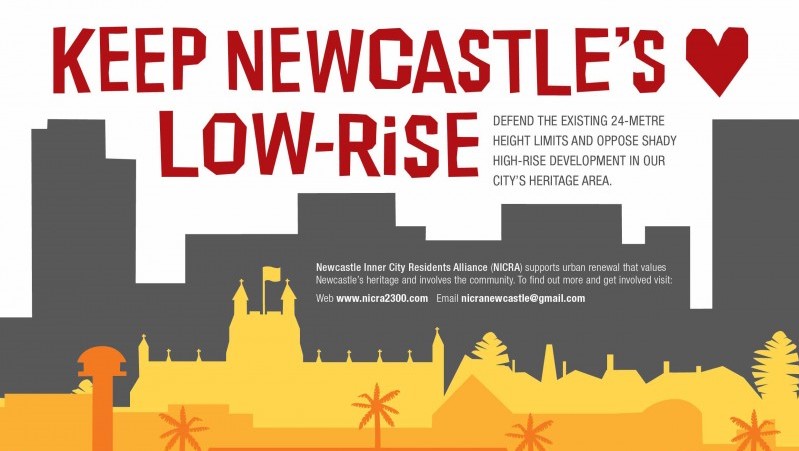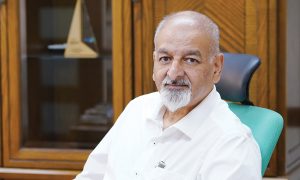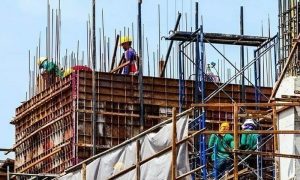Participants of a public hearing organised by Sindh Environmental Protection Agency (SEPA) opposed environmental impact assessment (EIA) report of a 32-storey building on a heritage site. They argued it violates law – its construction would badly damage the old structure – a heritage site.
It would also set a `bad precedent` and `ruin` other heritage sites for ‘restoration’, besides adding to traffic congestion and air pollution in the area due to commercial activities and vehicular emissions.
The high rise project is proposed by Silk Bank Limited (SBL) as its head office over old Lloyds Bank, a property in SBL’s commercial use for several years. Built with pink Jodhpur stones, the old Lloyds Bank is part of 20th century architecture in Karachi. The area was part of railway (1858) and Serai Quarters (1873). A museum is also part of proposed project whose EIA was carried out by Environmental Management Consultants Pakistan (EMC) Pvt Ltd. Architect firm involved in the venture is Arcop.
The program began with project presentations according to which building at Merewether Tower intersection of Chundrigar and M.A Jinnah Roads would add another hi-rise to Karachi’s skyline and provide extra space for financial activities but would not have any impact on land use. The old bank building, has a beautiful structure and if skillfully renovated, would add to heritage’s cultural grandeur.
`The project was approved by Heritage Committee and its recommendations were included in the design,` said Yawar Jilani, representing Arcop. The project wasn`t approved overnight and the committee took two years to review its design, he added.
`Heritage structure will not be demolished, nor altered` said Saquib Hussain, representing EMC. Building was limited to activities of a head office and is likely to continue its use. Its parking space was over Sindh Building Control Authority rules.
He was concerned over city’s increasing air pollution and said it was much beyond safe limits on every commercial road, but he claimed that environmental impacts of the project were manageable and could be mitigated. The project, he said, had room for waste treatment and recycling.
Highlighting their concerns, the participants, including architects, engineers, students and members of civil society organisations, rejected arguments favoring the project and said it was absolutely wrong to declare the project as eco-friendly and would not cause any alterations to heritage site.
`There will be major intervention (in the heritage site) as you will build 30 columns inside the old structure as foundations for the new building,` said Hameed Soomro, a senior architect and former member of the heritage committee, concerned over how the heritage site would appear after being juxtaposed with an imposing modern structure.
Pointing towards cumulative impact, the project in a busy commercial area, would encourage others to build more skyscrapers on the road already lined by many high rises, contributing to traffic congestion and air pollution, said Dr Raza Gardezi.
Sharmeen Obaid Chinoy, two-time Oscar winner, asked the panel, comprising SEPA officials and SBL representatives and project consultants, how many iconic buildings were left in the city and whether other heritage sites would have a similar fate.
Audience also criticised the fact that EIA report was not available on SEPA website at the hearing and the EIA report shared here did not include slides of original documents of project’s basic approvals was required to obtain from relevant departments.
`We have not been shown government approval of the heritage committee. In its absence, EIA report is incomplete and SEPA can`t bring an incomplete EIA report to the public hearing,` said Zubair Abro, a lawyer specialising in environmental law.
Waqar Phulpoto of SEPA, assured the audience that the department would not approve the project sans all basic approvals and that it would be discussed further by experts.
Menu








